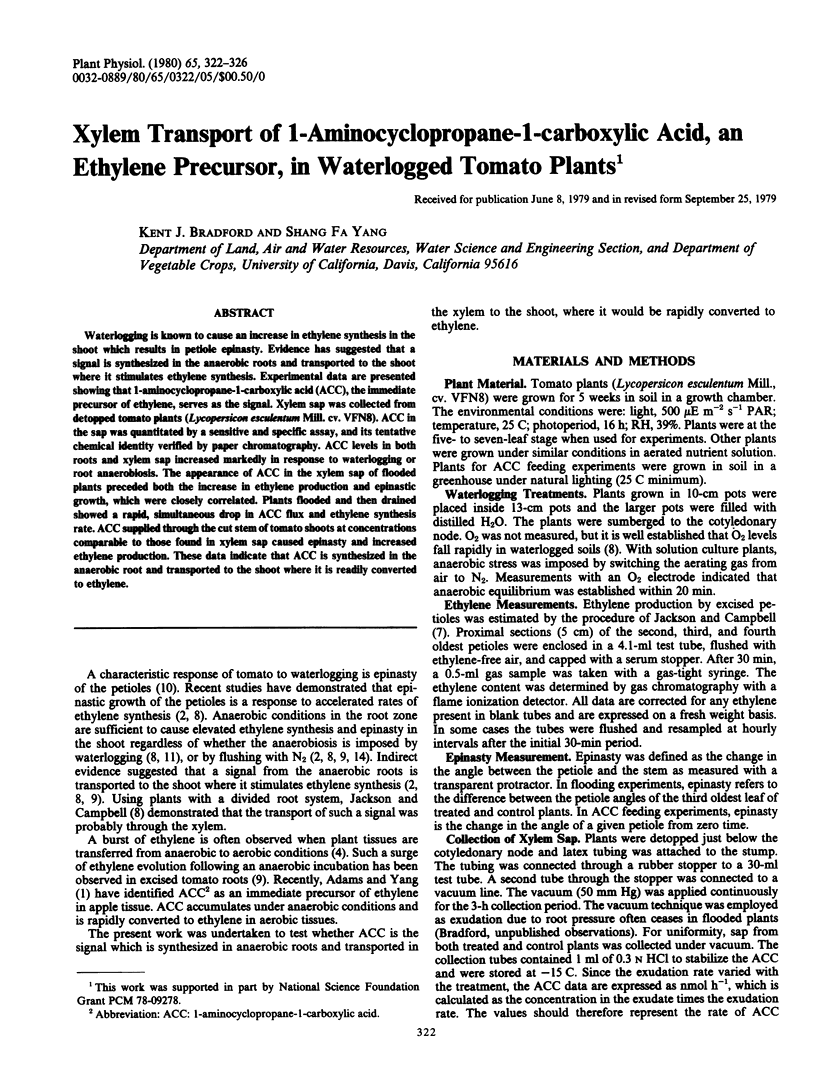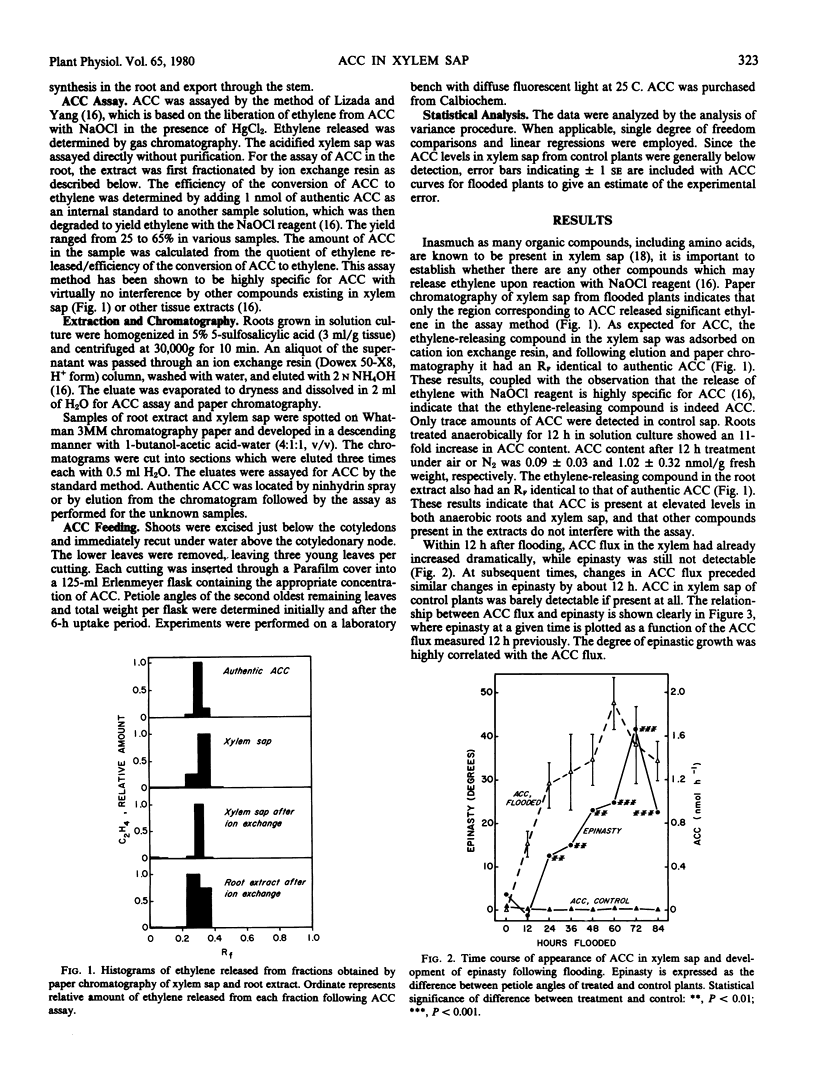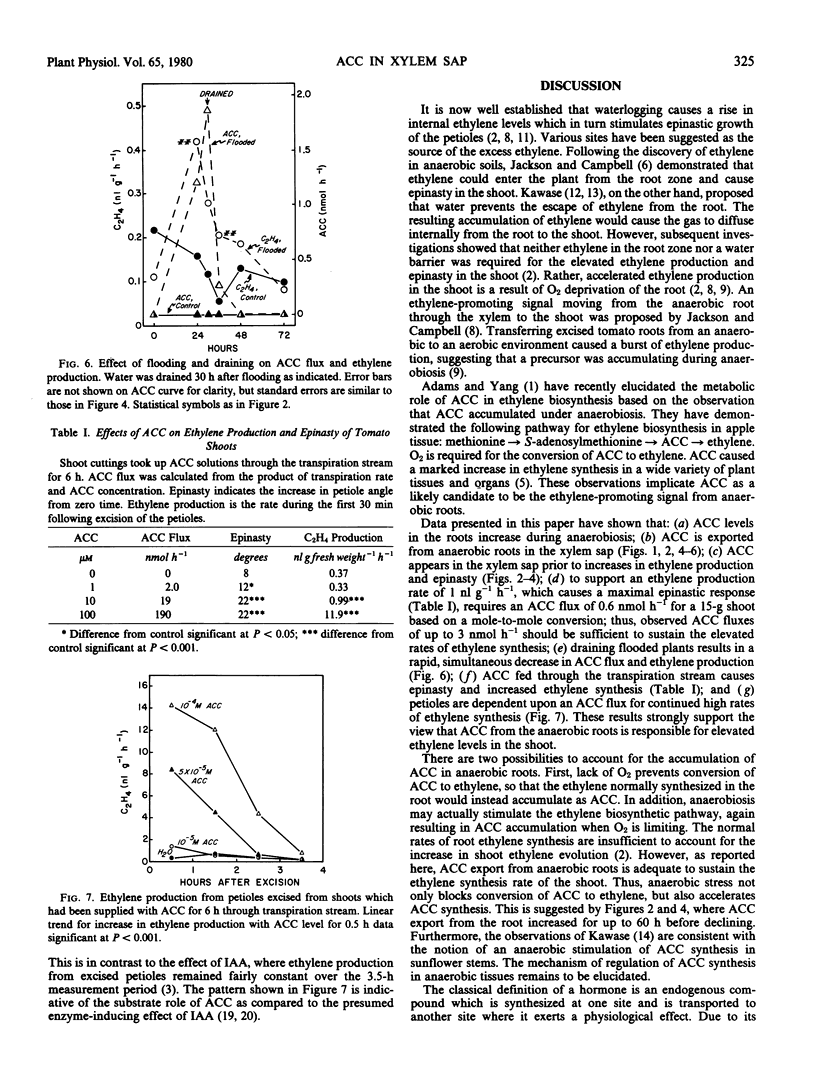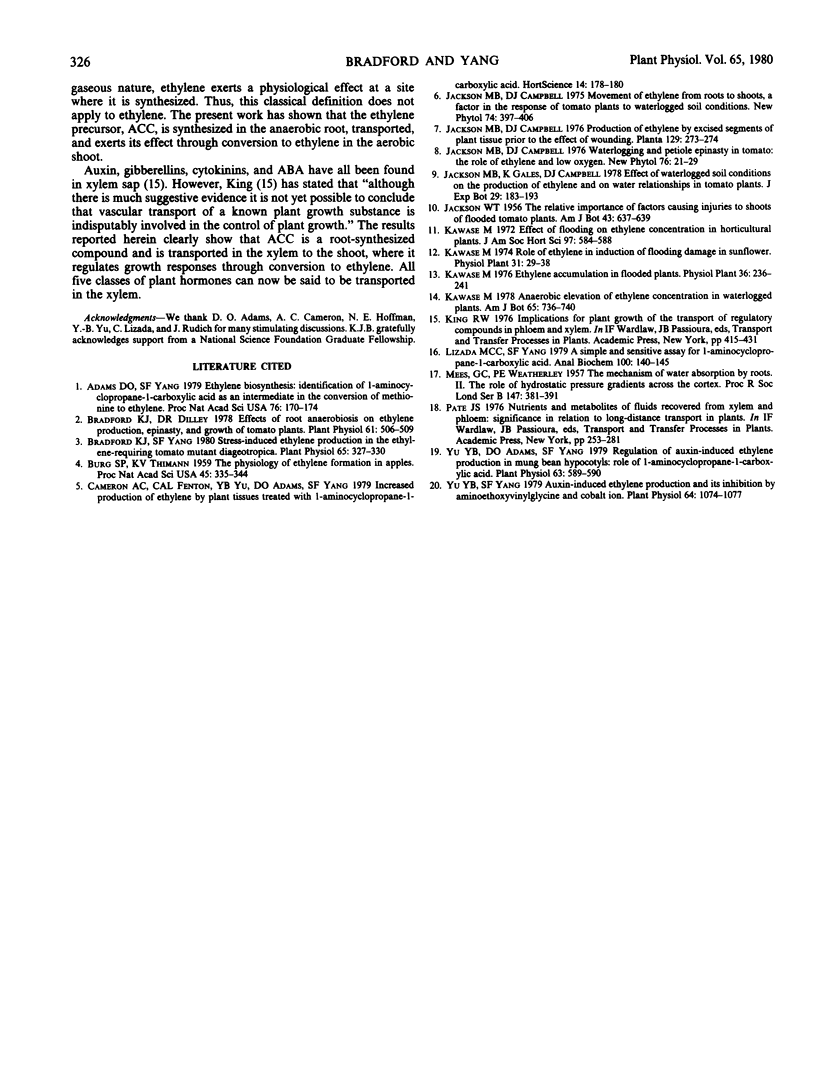Abstract
Waterlogging is known to cause an increase in ethylene synthesis in the shoot which results in petiole epinasty. Evidence has suggested that a signal is synthesized in the anaerobic roots and transported to the shoot where it stimulates ethylene synthesis. Experimental data are presented showing that 1-aminocyclopropane-1-carboxylic acid (ACC), the immediate precursor of ethylene, serves as the signal. Xylem sap was collected from detopped tomato plants (Lycopersicon esculentum Mill. cv. VFN8). ACC in the sap was quantitated by a sensitive and specific assay, and its tentative chemical identity verified by paper chromatography. ACC levels in both roots and xylem sap increased markedly in response to waterlogging or root anaerobiosis. The appearance of ACC in the xylem sap of flooded plants preceded both the increase in ethylene production and epinastic growth, which were closely correlated. Plants flooded and then drained showed a rapid, simultaneous drop in ACC flux and ethylene synthesis rate. ACC supplied through the cut stem of tomato shoots at concentrations comparable to those found in xylem sap caused epinasty and increased ethylene production. These data indicate that ACC is synthesized in the anaerobic root and transported to the shoot where it is readily converted to ethylene.
Full text
PDF




Selected References
These references are in PubMed. This may not be the complete list of references from this article.
- Adams D. O., Yang S. F. Ethylene biosynthesis: Identification of 1-aminocyclopropane-1-carboxylic acid as an intermediate in the conversion of methionine to ethylene. Proc Natl Acad Sci U S A. 1979 Jan;76(1):170–174. doi: 10.1073/pnas.76.1.170. [DOI] [PMC free article] [PubMed] [Google Scholar]
- Bradford K. J., Dilley D. R. Effects of root anaerobiosis on ethylene production, epinasty, and growth of tomato plants. Plant Physiol. 1978 Apr;61(4):506–509. doi: 10.1104/pp.61.4.506. [DOI] [PMC free article] [PubMed] [Google Scholar]
- Bradford K. J., Yang S. F. Stress-induced Ethylene Production in the Ethylene-requiring Tomato Mutant Diageotropica. Plant Physiol. 1980 Feb;65(2):327–330. doi: 10.1104/pp.65.2.327. [DOI] [PMC free article] [PubMed] [Google Scholar]
- Burg S. P., Thimann K. V. THE PHYSIOLOGY OF ETHYLENE FORMATION IN APPLES. Proc Natl Acad Sci U S A. 1959 Mar;45(3):335–344. doi: 10.1073/pnas.45.3.335. [DOI] [PMC free article] [PubMed] [Google Scholar]
- Lizada M. C., Yang S. F. A simple and sensitive assay for 1-aminocyclopropane-1-carboxylic acid. Anal Biochem. 1979 Nov 15;100(1):140–145. doi: 10.1016/0003-2697(79)90123-4. [DOI] [PubMed] [Google Scholar]
- MEES G. C., WEATHERLEY P. E. The mechanism of water absorption by roots. II. The role of hydrostatic pressure gradients across the cortex. Proc R Soc Lond B Biol Sci. 1957 Dec 3;147(928):381–391. doi: 10.1098/rspb.1957.0057. [DOI] [PubMed] [Google Scholar]
- Yu Y. B., Adams D. O., Yang S. F. Regulation of Auxin-induced Ethylene Production in Mung Bean Hypocotyls: Role of 1-Aminocyclopropane-1-Carboxylic Acid. Plant Physiol. 1979 Mar;63(3):589–590. doi: 10.1104/pp.63.3.589. [DOI] [PMC free article] [PubMed] [Google Scholar]
- Yu Y. B., Yang S. F. Auxin-induced Ethylene Production and Its Inhibition by Aminoethyoxyvinylglycine and Cobalt Ion. Plant Physiol. 1979 Dec;64(6):1074–1077. doi: 10.1104/pp.64.6.1074. [DOI] [PMC free article] [PubMed] [Google Scholar]


